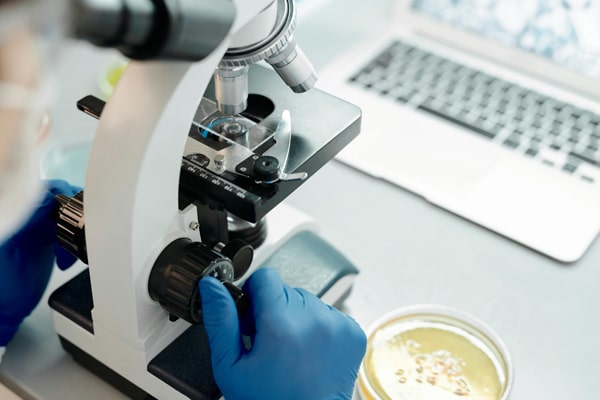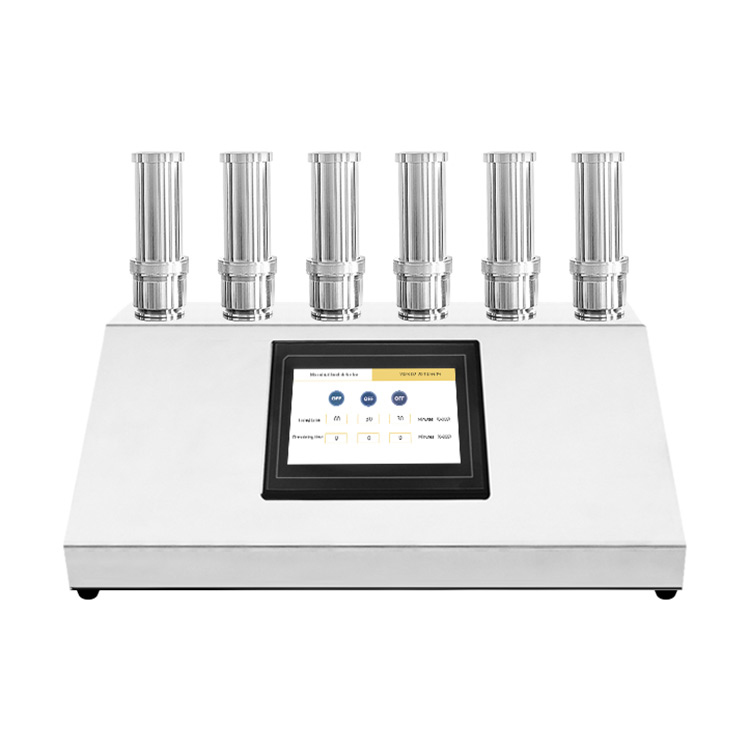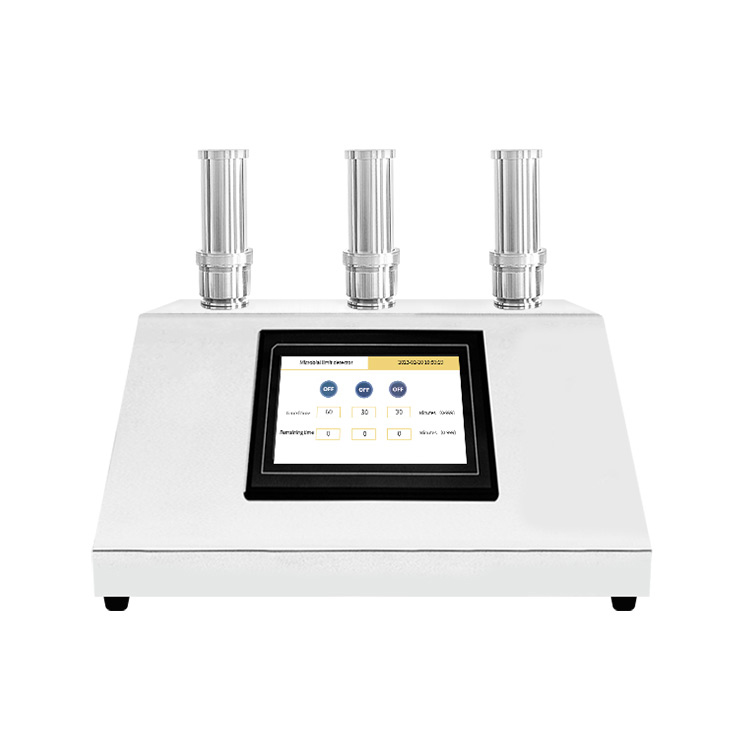Product Center
- Negative oxygen ion detector
- Dust particle counter
- Air Bacteria Sampler
- Biological aerosol detector
- Infrared CO/CO2 analyzer
- Microbial Air Monitoring Systems
- Microbial aerosol concentrator
- Environmental air comprehensive sampler
- Mercury meter
- Trace sulfur analyzer
- Bacterial Collector
- Quantitative sampling robot
- Emanometer
- Microbial limit tester
Full dimensional detection solution for food processing hygiene environment
Source:Hengmei Environmental Sanitation Instrument Network Update time:2025-07-31 15:29:08
Objective: To establish a dynamic monitoring system that complies with GMP/HACCP/ISO 22000 standards, achieving precise prevention and control of air cleanliness, microbial activity, and surface pollution.

Core logic of scheme design
Adopting a three-dimensional integrated control mechanism of "air surface real-time warning":
Air cleanliness → Hengmei dust particle counter
Active microbial load → Hengmei planktonic bacteria sampler+bioaerosol detector
Surface and liquid contamination → Hengmei microbial limit tester
Establish a closed-loop management from environmental monitoring to pollution tracing.
Key equipment application plan
(1) Dynamic monitoring of air cleanliness (Hengmei dust particle counter)
Execution standard: ISO 14644-1/GB 16292
Implementation points:
Set up continuous monitoring points in the clean workshop (filling area, cooling area, packaging area) to track real-time fluctuations in particle numbers ≥ 0.5 μ m&≥ 5 μ m;
The linked air conditioning system automatically triggers an alarm when the particle concentration exceeds the limit (such as ≥ 0.5 μ m particles>352000 particles/m ³, corresponding to ISO level 8);
Generate particle distribution heatmap and locate dust diffusion sources (such as equipment seal failure areas).
(2) Quantitative analysis of active microorganisms (Hengmei planktonic bacteria sampler)
Execution standard: ISO 14698-1/GB/T 16293
Innovative applications:
Using impact sampling (100L/min flow rate) to capture cultivable microorganisms in the air;
Focus on monitoring high-risk areas (such as 30cm above exposed food), and accurately calculate CFU/m ³ after culturing in sampling dishes;
Use TSA/SDA culture medium alternately every week to monitor the total number of bacteria and mold yeast simultaneously.
(3) Rapid screening of pathogenic microorganisms (Hengmei bioaerosol detector)
Technological breakthrough:
Real time detection of 0.5-10 μ m bioactive particles (such as spores and viral vectors) in the air based on laser-induced fluorescence technology;
30 second response time, instant alarm for the release of foodborne pathogens such as Salmonella and Listeria;
Suitable for tracing sudden pollution in raw material thawing areas and areas where raw and cooked materials intersect.
(4) Surface and liquid pollution control (Hengmei microbial limit tester)
Execution standard: Chinese Pharmacopoeia/ISO 18593
Key operations:
Surface monitoring: Contact dish method is used to detect bacterial colonies on the surface of equipment and tools (with a standardized sampling of 25cm ²);
Liquid filtration: Perform membrane filtration (0.45 μ m pore size) on process water and cleaning solution, intercept microorganisms, and culture for counting;
Data association: Cross comparison between abnormal point microorganisms and airborne bacteria data in the same area to locate pollution transmission pathways.
Intelligent Data Management Platform
Multidimensional data integration: Integrate parameters such as particle count, colony count, and bioaerosol concentration into a central database;
Risk visualization: Automatically generate a dynamic pollution risk map and label high-risk areas in the workshop (such as packaging areas with frequent occurrences of excessive airborne bacteria);
Warning threshold setting:
Level 1 warning: Particle count continues to rise but does not exceed the standard → triggering equipment maintenance
Level II early warning: floating bacteria exceed the action limit (such as ≥ 50 CFU/m ³) → start environmental disinfection and sterilization
Level 3 warning: Pathogen characteristic signals detected in bioaerosols → Shutdown traceability
Compliance verification and continuous improvement
Monthly trend analysis: Compare environmental parameters with product microbiological test results (such as E. coli detection rate) to verify the effectiveness of monitoring;
Disinfection effect verification: After cleaning, use a planktonic bacteria sampler to detect the sterilization rate of the space (requirement ≥ 99.9%);
Equipment calibration traceability: Dust particle counters are calibrated annually using laser scattering standard substances, and microbiological instruments are calibrated using ATCC standard strains.
Implementation benefits
Risk control: The bioaerosol detector reduces the response time for sudden pollution from 24 hours to 5 minutes;
Cost optimization: By using particle counters to locate dust sources, the energy consumption of air filtration systems can be reduced by 30%;
Compliance assurance: Meets FDA 21 CFR Part 117 and EU EC 852/2004 regulatory audit requirements.
Technical note: The membrane filtration function of Hengmei microbial limit analyzer is particularly suitable for high viscosity samples (such as sauces and concentrated juices), avoiding counting errors of traditional pouring methods; Its sterile testing mode can be directly used for sterile validation of packaging materials.
This plan builds a biosafety barrier for food production through four layers of technical defense, upgrading environmental monitoring from passive inspection to active defense, providing comprehensive technical support for food safety.
Article address:https://www.environmentinstrum.com/solu/33.html
- Related products
- Related articles
-
10-17 2025
Portable Quantitative Sampling Robot for IAQ and Public Health
As an important component of modern buildings, the hygiene status of centralized air conditioning an···...
-
09-24 2025
Bioaerosol Detector with ATP Bioluminescence Technology for Rapid Airborne Microbe Detection
In the fields of public health, environmental monitoring, and biosafety, bioaerosol detectors have b···...
-
07-31 2025
Analysis and Application of Handheld Laser Particle Counter Technology
In the field of modern industry and technology, air cleanliness is no longer an optional standard, b···...
-
09-09 2025
Dust Particle Counter: Essential Tool for Cleanroom Monitoring and Quality Control
In modern industrial production and scientific research, air cleanliness directly impacts product qu···...













